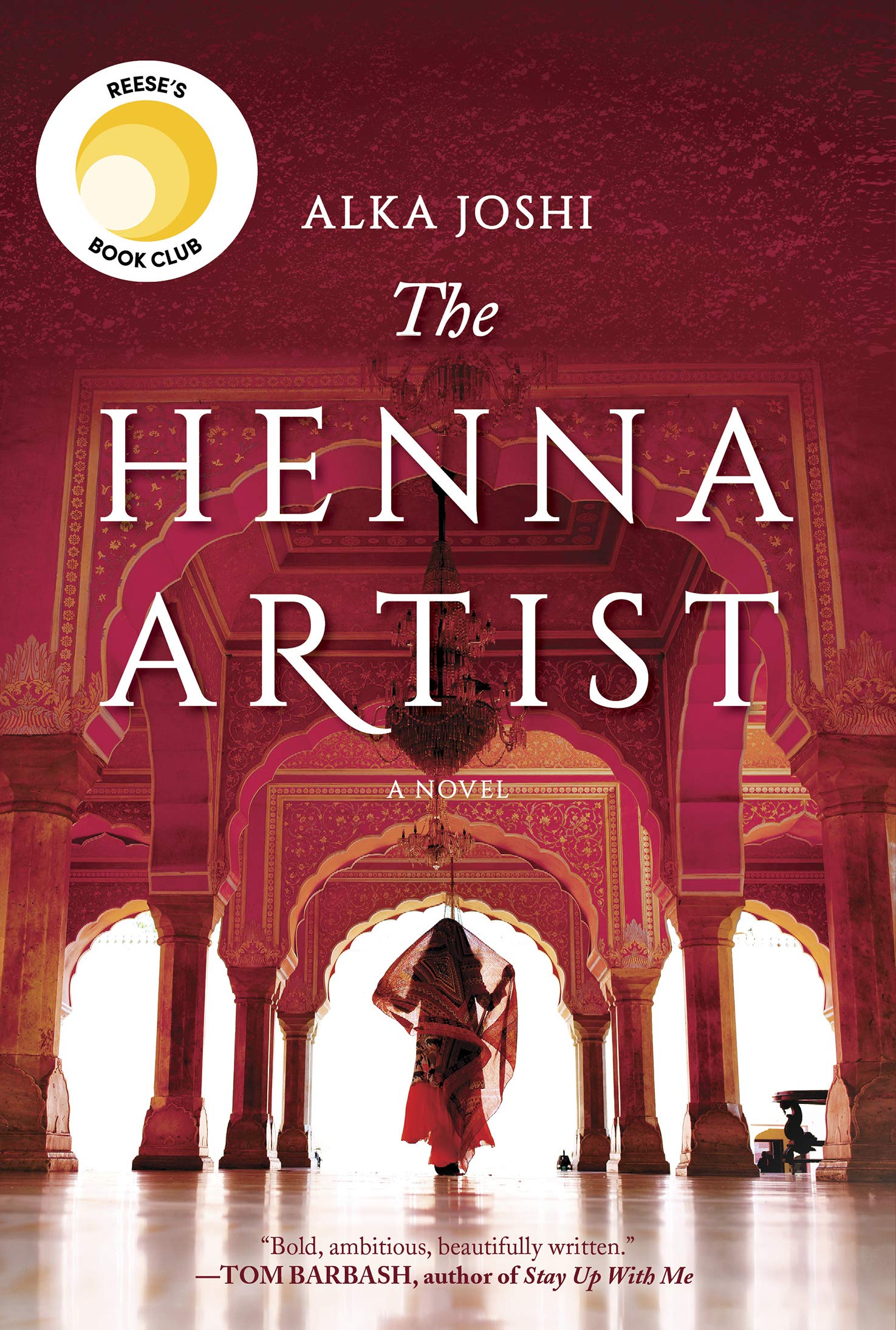Review: The Henna Artist by Alka Joshi
Category:
Rating:

Introduction:
At the age of 17, Lakshmi escapes from a violent marriage and finds herself in the midst of the bustling, colorful city of Jaipur in the 1950s. She quickly becomes the most sought-after henna artist among the affluent women of high society, earning their trust as both a confidante and a skilled artist. However, Lakshmi must be cautious not to betray the secrets of her clients, while also guarding her own.
With her unique henna designs and wise counsel, Lakshmi must navigate carefully around the jealous gossips who could easily ruin her reputation and her livelihood. As she strives to establish an independent life, Lakshmi’s world is turned upside down when her estranged husband reappears after many years, accompanied by a younger sister she never knew existed. Despite the risks, she perseveres, using her talents to uplift those around her while continuing to protect herself.
Review:
As someone who generally doesn’t gravitate towards contemporary literature, I may not be the most ideal critic for this particular genre. However, it’s worth noting that this book has been heavily criticized by both Indian nationals and those who are pro-life, ever since its release. This is a common challenge that comes with writing historical fiction, regardless of the nation it represents. It brought to mind my experience reading “The Rose Code,” which also received mixed reviews.
Despite the polarizing opinions surrounding “The Henna Artist,” I found myself thoroughly immersed in Lakshmi’s journey as she navigates the complexities of post-independence India and discovers her own identity. The Henna Artist provides a powerful depiction of a woman’s quest for self-fulfillment in a society that is in flux, oscillating between its traditional roots and modern ways. This novel opens a window to a world that is both vibrant and captivating, yet also harsh and merciless.
Whenever I travel to India, Rajasthan always tops my list of favorite destinations to visit. The Pink City of Jaipur, in particular, is a place that never fails to captivate me with its enchanting ambiance, rich cultural heritage, and fascinating history. Shimla is another such place that exudes a certain magic, and I find myself drawn to it just as much.
Given my affinity for these locations, it’s no surprise that I was fully invested in the setting of “The Henna Artist.” The author’s depiction of these places in India, with their distinct sights, sounds, and flavors, truly transported me to another time and place.
There has been a lot of debate among reviewers about whether or not a henna artist like Lakshmi could realistically achieve the feats depicted in the book, or have exposure to Western literature as a native Indian. However, Lakshmi’s backstory effectively counters such arguments. As the daughter of a highly-educated freedom fighter and English teacher, she had a solid educational foundation from the start. Although her father’s transfer to a rural village as a result of his activism was a significant setback, he made sure that Lakshmi had the tools needed to succeed.
Furthermore, Lakshmi’s character is portrayed as resourceful, astute, and adaptable – qualities that enabled her to overcome challenges and make the most of the opportunities available to her. With the skills and knowledge instilled in her from a young age, Lakshmi was well-equipped to navigate the complexities of life and ultimately succeed in her chosen profession.
“The Henna Artist” explores a range of complex issues, such as classism, sexism, and abortion. Although some readers may find these themes difficult to confront or attempt to ignore them, the harsh reality is that these issues persist today on a global scale.
The author does a commendable job of shining a light on the struggles faced by women like Lakshmi, who are often marginalized and oppressed due to their gender and social status. Through her portrayal of Lakshmi’s experiences, the author raises important questions about the value of women’s autonomy and the pervasive influence of patriarchal systems in shaping women’s lives. The book also addresses the contentious topic of abortion and the difficult choices that women often face in navigating their reproductive health. Although these issues can be challenging to confront, it is important to acknowledge and discuss them in order to work towards creating a more equitable and just society.
I am unsure why some supporters of the pro-life movement were objecting to Lakshmi’s insistence that Radha undergo an abortion. Radha was a 13-year-old girl who was inexperienced enough to believe that she and Ravi had a future together. After she gave birth, it became abundantly clear why she was not ready to be a mother. In one of the top negative reviews, someone wrote, “If I were Lakshmi, I would have thrown her out of the house because she was so irritating.” This comment surprised me. How could someone forget that she was a young girl who was completely unfamiliar with the ways of the world?
Overall, I thoroughly enjoyed reading this book and I am eagerly looking forward to reading the next installment in the series.
Book Cover:


